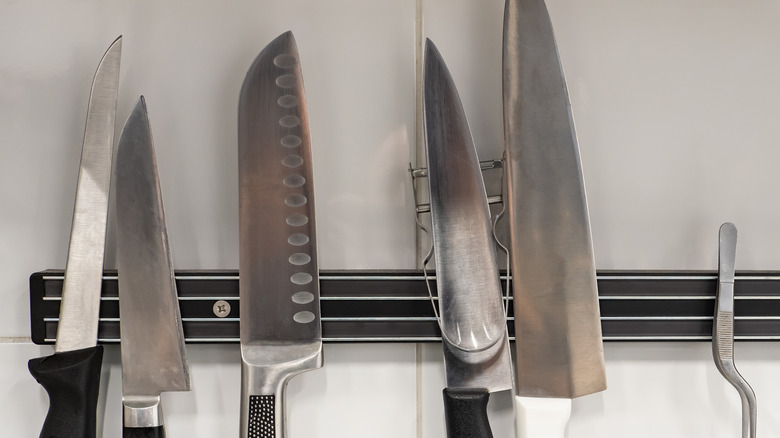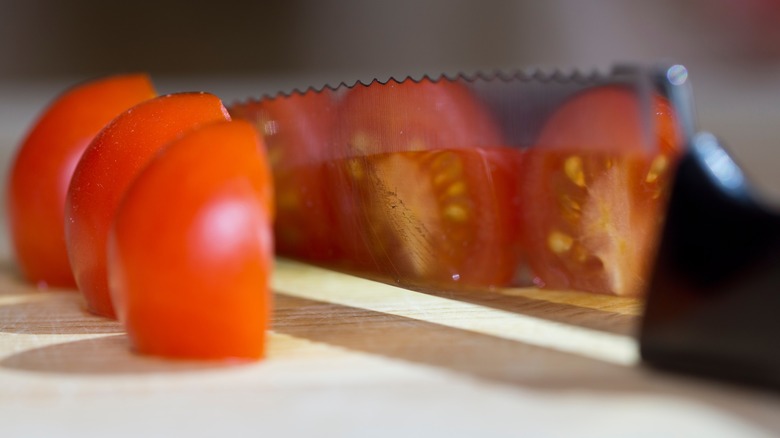Why Thomas Keller Recommends Using A Bread Knife To Cut Tomatoes
If you've ever spent time in the kitchen, you know that having a good set of kitchen knives is essential for cooking efficiently. Knives help you cut, slice, and dice foods such as onions, herbs, bread, and just about anything. Without a knife, cooking would be complicated.
Thomas Keller said, "I really have an aversion to useless tools. We tend to clutter our drawers with things that we don't need," (via Master Class). It is true. How many times have you opened a kitchen drawer or cabinet and had to sift through old tools that either don't work well or are partially broken? You keep these tools, hoping that you may use them one day, but let's be honest; that day never comes.
Kitchen knives are an item that is always needed and never go out of style. From paring knives, chef's knives, carving knives, and bread knives, they all serve an essential purpose.
Types of kitchen knives
Master Class and Thomas Keller say that knives are a necessary extension of a chef's hand. Knives get the job done, especially if you're using sharp ones. According to The Kitchn, various knives are available, and many are sold as a set with a knife block that protects the blades.
Paring knives perform intricate and delicate cutting. According to Cooks Illustrated, paring knives can be used for deveining shrimp and are perfect for trimming fruits and veggies such as oranges and radishes. Healthy Kitchen 101 lists the chef's knife for its ability for cutting almost anything from chicken to carrots while boning knives can fillet fish and de-bone meats. Martha Stewart says the clever knife cuts through tough veggies such as root vegetables and it pounds, minces, and dices foods.
According to Master Class, carving knives are ideal for slicing large turkeys, hams, and roasts. They recommend using serrated bread knives for slicing into loaves of crusty bread or other baked goods. Surprisingly, Thomas Keller says they can also be used to cut ripe tomatoes into paper-thin slices.
Use a bread knife for cutting tomatoes
Serrated knives have ridges or "teeth" that help grab onto the object it is cutting. In the case of a tomato, a serrated knife grab's onto the thin, delicate skin and slices straight through it, rather than slipping or crushing the tomato. If you use the wrong type of knife, or if the blade is dull, you risk the chance of squishing the tomato, causing a messy situation. Not to mention, dull knives are dangerous.
However, it sounds like Thomas Keller may be on to something (via Master Class). The Home Depot also says not to limit bread knives to only cutting bread. They say that knives with small, serrated teeth work well for slicing, you guessed it, ripe tomatoes. Other foods among their list of things to cut with a bread knife include whole citrus fruits, pineapples, melons, biscotti, cheeses, and hard processed meats.
The Daily Meal claims that around 322,000 people end up in the emergency room every year from kitchen knife injuries. Whether it's from slicing an avocado or just from a momentary lapse of concentration leading to the knife going in the wrong direction; knives are by far the most kitchen-caused injuries. So, whatever you're slicing and dicing, be careful.


